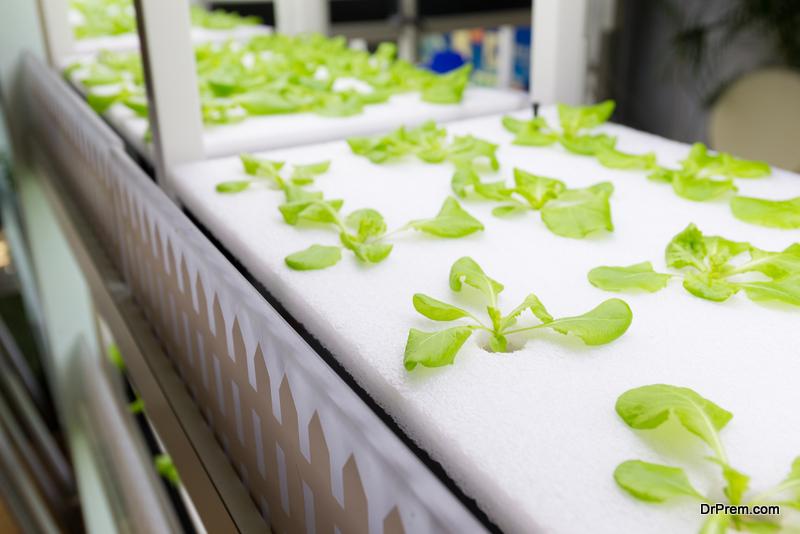Greenhouse cultivation offers immense opportunities for year-round and controlled environment agriculture. As the demand for fresh produce continues to rise, growers are increasingly exploring different cultivation techniques within greenhouses like Exaco Greenhouses that already have a sustainable edge. When used together, these optimize productivity, enhance crop quality, and maximize resource efficiency. In this article, we will delve into various greenhouse cultivation techniques, ranging from traditional to innovative methods, and explore their benefits and applications.
1. Soil-Based Cultivation
Soil-based cultivation is the most traditional and widely used technique in greenhouses. It involves growing crops directly in the soil within the greenhouse structure. This technique offers familiarity and simplicity, allowing growers to utilize standard agricultural practices. However, it requires proper soil management, including nutrient balancing, irrigation, and disease control.
2. Hydroponics
Hydroponics is a soilless cultivation technique where plants are grown in nutrient-rich water solutions instead of soil. This method allows for precise control over nutrient levels, pH balance, and water availability, leading to optimized plant growth. Hydroponics also reduces water consumption and allows for denser planting, resulting in higher crop yields per unit of space. Common hydroponic systems include nutrient film technique (NFT), deep water culture (DWC), and aeroponics.
3. Aquaponics
Aquaponics combines hydroponics with aquaculture, creating a symbiotic system where fish and plants mutually benefit each other. The waste generated by fish provides nutrients for the plants, while the plants filter and purify the water for the fish. This closed-loop system minimizes water and nutrient waste, making it an environmentally sustainable option. Aquaponics is well-suited for growing leafy greens, herbs, and certain fish species.
4. Vertical Farming
Vertical farming involves growing plants in vertically stacked layers or shelves, making efficient use of limited space. It utilizes artificial lighting systems, such as LEDs, to provide uniform light distribution to all plant levels. Vertical farming allows for high-density planting, reduces water consumption, and enables year-round production. This technique is particularly beneficial in urban areas with limited available land.
5. Aeroponics
Aeroponics is a high-tech cultivation technique where plant roots are suspended in air, and nutrient-rich mist is periodically sprayed onto them. This method promotes efficient nutrient absorption and oxygenation, leading to faster growth rates and increased yields. Aeroponics conserves water and requires minimal substrate, making it suitable for high-value crops and areas with limited water resources.
6. Drip Irrigation
Drip irrigation involves delivering water and nutrients directly to plant roots in a controlled manner. Water is distributed through a network of tubes with emitters that release small amounts of water near each plant. Drip irrigation ensures efficient water usage, reduces the risk of diseases caused by excess moisture, and allows for targeted application of fertilizers. This technique is adaptable to various crop types and greenhouse setups, and it’s especially more effective in Large Greenhouses.
7. Greenhouse-Integrated Pest Management (IPM)
Integrated Pest Management is a holistic approach to pest control that minimizes the use of pesticides. By employing biological controls, such as predatory insects, parasitic wasps, or nematodes, greenhouse growers can effectively manage pests while preserving ecosystem balance. IPM practices also include regular monitoring, early detection of pests, and implementing physical barriers to prevent infestations.
8. Light Manipulation Techniques
Light manipulation techniques involve modifying the quality, intensity, and duration of light exposure to optimize plant growth and development. Supplemental lighting using artificial sources, such as LEDs, can extend photoperiods and enable year-round production. Additionally, light-diffusing materials or shading systems can provide uniform light distribution and reduce the risk of light stress or sunburn on plants.
Conclusion
Exploring different cultivation techniques in greenhouse agriculture allows growers to adapt to specific crop requirements, environmental conditions, and market demands. From traditional soil-based cultivation to advanced techniques like hydroponics, aquaponics, vertical farming, and aeroponics, each approach offers unique advantages in terms of resource efficiency, crop yields, and sustainability. By selecting the most suitable technique for their specific needs, greenhouse growers can unlock the full potential of controlled environment agriculture and meet the growing demand for fresh, high-quality produce.
Article Submitted By Community Writer


